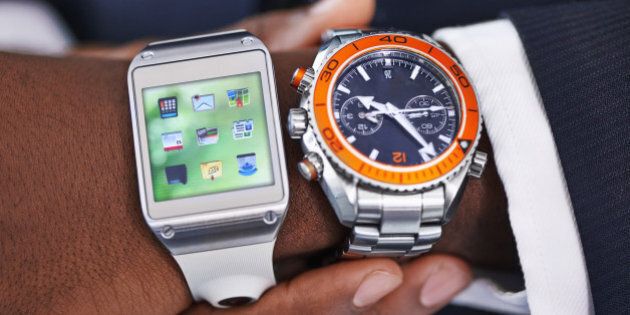
Today's trends are coming at us faster than ever and have a life cycle that is shorter than we've ever seen before. Trends are increasingly global -- and with that, they're bigger, better, and faster.
From a generation who can track, monitor, record and analyse their every moment, to work that is increasingly being done in non-traditional places, here are some trends to watch in 2016.
1. Life tracking
Not only do we photograph much of our lives and share it as we go in this era of selfies and social media; armed with Go Pros and dashboard cams we video a lot of life, too.
However, the year ahead will see life tracking go to new levels with the use of the now-ubiquitous, wearable, life-tracking technology such as the Apple watch, Microsoft band and Fitbit.
Never before has there been a generation who can life track their every heartbeat (literally) as this generation today. From steps walked to hours slept, users now have access to more health data than their doctor -- all uploadable and analysable.
The year ahead will see apps emerge and programs developed to make this data more comparable and usable, and interested parties such as health insurance companies, health advocacy groups and even local communities will provide rewards, discounts, competitions and benefits to support the wider use and corresponding healthy lifestyles that such technology encourages.
2. Technocracy
Technology is now empowering and, in many ways, improving democracy. Traditionally, democracy worked through corresponding with one's local Member of Parliament, signing petitions to be tabled, and of course voting in elections.
However, in a technocracy, tweets, trending hashtags, likes and online campaigns have the power to reverse government decisions and influence policy priorities. Such clicktivism gives voice to those beyond adults and enrolled voters and those outside of an electoral or state boundary.
The year ahead will see more sophisticated technology-driven campaigns and both viral and promoted campaigns will become more common. Just as we have seen the power of technology influence legislation such as Uber shaping transport legislation and Air BnB impacting accommodation regulations, the mass usage of convenience and lifestyle apps will continue to shape policy.
3. Bigger Australia
In February, Australia will hit its next population milestone of 24 million. And by the end of the year, Sydney will be Australia's first city to hit the 5 million mark, with Melbourne just shy of this number.
While the population growth rate has slowed over the past year, with slightly fewer births and declined migration numbers, Australia is still adding more than a million people every three years. In fact, in 2009, when then-Prime Minister Kevin Rudd talked about Big Australia, the population had just hit 22 million. Since then it has increased by almost 10 percent in just six years.
The population forecast then was for Australia to reach almost 36 million by the middle of this century. However, on current trends, it will exceed 40 million by then.
It seems that Australians have responded to the growth, with housing trends of densification, the growth in apartment living and "walkable" urban communities. In addition to this, the year ahead will see policy and political responses to population growth through more focus on growing regional centres, investing in public transport and road infrastructure, airport and flight movement expansions and renewed discussion of a very-fast train link between Sydney and Melbourne, which together are home to 40 percent of the national population.
4. Brand fatigue
Price-sensitive shopping and value seeking is the new norm for Australian consumers. Cost of living pressures will continue to drive consumer demand for low prices, discounts and sales.
The year ahead will see Australians adapt even more to new brands or "non brands" in an era of high-quality, private-label brands that deliver lower prices. A new generation of consumers who are early adoptors, accustomed to online shopping and influenced by global brands, are redefining the Australian brand landscape.
Even in areas that were very brand-sensitive, such as consumer electronics, we are seeing the rapid rise of emerging brands -- many of these from China. Two of the five leading global smartphone brands are Huawei and Xiaomi, and emerging brands such as Oppo (from China) now sit alongside the iPhone.
Australian consumers are, in many ways, brand agnostic -- but they are price believers. They are still tuned into brands that offer a great value proposition and legacy brands that have built a reputation of quality are well trusted and regarded. But the year ahead will see an ongoing challenge to maintain this relevance in a landscape of more brands, less loyalty and ongoing price sensitivity.
5. Powerworking
This is the work-equivalent of power napping. With widespread Wi-Fi access and the growing acceptance of teleworking, work is increasingly being done in non-traditional places (while commuting, at home, cafés, shared spaces) and outside of typical working hours.
More importantly, work is being done in bursts. The hot-desking and co-working spaces of today create more collaboration -- but also more distraction. Combined with a new generation of staff accustomed to multi-screening and shaped in an era of shorter attention spans, we are seeing the emergence of a changing approach to work, with chunking or micro-working meaning that work is being conducted across more hours but in a series of concentrated phases.
The year ahead will see an ongoing attempt by employers to support the flexibility of modern workers and workplaces, while improving productivity. This will see more tracking tools, and output measurement apps provided to measure and enable productivity.